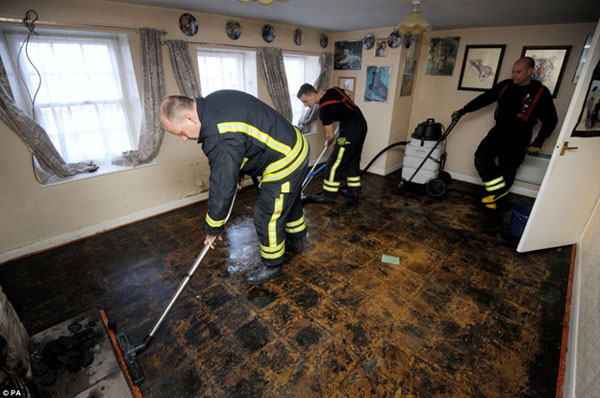 It’s been a tough couple of months for Mother Earth! We saw earthquakes, we saw torrential downpours, and we saw hurricanes, which displaced millions. While it’s been heartbreaking to watch, it puts everything into perspective, doesn’t it? Here at Restumping Melbourne, our goals stem from educating properly about healthy levels of risk. A big piece of this is disaster-readiness, and ensuring that our valued customers know how to handle anything that’s thrown their way. That’s why, today, we’re discussing what to do, after water damage has taken place.
It’s been a tough couple of months for Mother Earth! We saw earthquakes, we saw torrential downpours, and we saw hurricanes, which displaced millions. While it’s been heartbreaking to watch, it puts everything into perspective, doesn’t it? Here at Restumping Melbourne, our goals stem from educating properly about healthy levels of risk. A big piece of this is disaster-readiness, and ensuring that our valued customers know how to handle anything that’s thrown their way. That’s why, today, we’re discussing what to do, after water damage has taken place.
But first, let’s talk about what to do before water damage. Early awareness and consistent education are keys to prevention. You can’t really stop a flood from entering your home, but you can ensure that you’re equipped with the tools to make it through the storm. Get together with your family or roommates and discuss exactly what you would do in any stressful scenario. Having a plan in place, and ensuring that you’re all on the same page is key. We’re also passionate about double-checking your insurance coverage. There is such a thing as “underinsured”.
Fast-forward, post water damage – what are you to do? It’s time to clean up. Safety is paramount here. You want to be vigilant about broken items and floating debris, but you also want to be award of the mould and bacteria, which may be present in the water. If you can’t call in the experts, at least make sure that you’re wearing protective gear like work boots, thick gloves and masks.
Next up, it’s time to remove the most cumbersome items. This can be challenging emotionally and physically, but we prioritize it because these items can be so time-consuming to remove. Know that family, friends and loved ones all come together in a time of crisis and you can easily lean on them for support.
Now, you’re probably wondering- who is going to remove the water? Sometimes, it’s just too dense or accumulative to handle yourself. If a room is more than halfway under water, please make sure that you’re working with an accredited company or contractor. There are DIY situations, however, where you can save yourself a pretty penny. If the water removal is minimal, you may be able to do it, using a shop vacuum to extract the water.
Once the water is out of the space, we’re sure that you want to decompress a little bit. But it’s time to disinfect. As mentioned above, any flooded areas are ground zero for bacteria and mould. Scrub your floors, walls and ceilings using a disinfectant. Then, do it again. There’s no such thing as overachieving during this step.
Finally, it’s time to rebuild. In the most literal sense of the word, you may have elements of a room, which need to be completely rebuilt. But it’s also time to get excited about the future ahead. Maybe you were thinking about redesigning that room anyways. It’s time to begin your next chapter.
Questions? Comments? Reach out to our team, and be sure to check out our blog for more information about taking care of your home.
